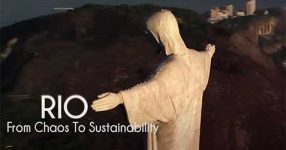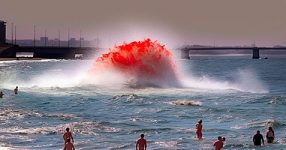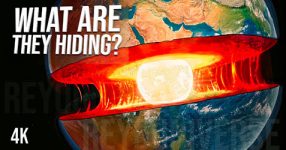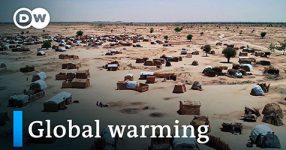Greenland’s ice sheet harbors a secret, offering a glimpse into our future. The documentary “Expedition to the cold heart of Greenland” takes viewers on a journey through the rivers of meltwater that form and vanish each summer and winter. These rivers lead to holes called Moulins, believed to extend hundreds of meters down into the ice. The documentary follows a filmmaker and scientists descending into one such Moulin to uncover the mysteries held within.
The urgency to understand the speed of ice melting, its impact on sea levels, and the broader consequences for our planet becomes the central focus. The journey aims to answer critical questions about the pace of climate change, with the documentary providing a unique perspective by combining scientific exploration and personal experiences.
Direct Observation and Ground Truth
While many scientists study ice melt using data from satellites and computer models, the documentary emphasizes the significance of direct observation and ground truth. Joining three extraordinary professors and explorers, the filmmaker encounters the challenges of walking on ice, reflecting on personal experiences from childhood and the impact of environmental changes. The scientists stress the necessity of studying the process through field studies, drilling holes, and placing sensors directly on the ice to gain accurate insights into climate history.
The journey unfolds as the team measures snowfall, drills through layers of snow to reach ancient ice, and observes the dynamic features of the ice sheet. By combining measurements, observations, and real-time experiences, the documentary offers a comprehensive understanding of the complexities involved in studying the impact of climate change on Greenland’s ice sheet.
Unveiling Climate History and Ice Flow Dynamics
The documentary delves into the rich history embedded in Greenland’s ice, with layers representing different periods, from the Ice Age to the interglacial period. The scientists highlight the need for on-site measurements and direct engagement with the ice to complement satellite data and computer models. The intricate details of the ice sheet’s surface, shaped by wind like frozen waves, come to life through the filmmaker’s lens.
Exploring the ice sheet reveals not only the impact of climate change but also the unique opportunity to witness the flow of ice, a rare occurrence in the world. The film captures the essence of the ice sheet’s motion, providing a visual narrative that enhances our understanding of the environmental shifts occurring in Greenland.
Meltwater’s Role and Unforeseen Hazards
A significant focus of the documentary is on meltwater and its role in accelerating ice melt. The team descends into a Moulin to study the water’s impact on the glacier’s structure and speed. The warm water from summer melt serves as a lubricant, causing the ice to move faster. The documentary explores the dangers and hazards involved in such fieldwork, emphasizing the importance of safety measures and risk assessment.
The unexpected discovery of a water-filled crevasse and the subsequent reminders of potential dangers highlight the unpredictability of environmental research. Despite the risks, the scientists express their dedication to continuing measurements, reinforcing the urgency of understanding and addressing the impact of climate change on Greenland’s ice sheet.
Conclusion: A Call to Action
As the documentary concludes, it leaves viewers with a profound message about the imminent threats posed by climate change. The scientists’ dedication to their work, coupled with the visual narrative of Greenland’s changing landscape, serves as a call to action. The urgency to address carbon footprints, reduce greenhouse gas emissions, and take collective steps to mitigate climate change becomes a central theme.
“Expedition to the cold heart of Greenland” serves as a powerful testament to the importance of understanding the consequences of a world without ice. It challenges viewers to listen to nature, heed the warnings of scientists, and take meaningful actions to preserve the planet for future generations.












